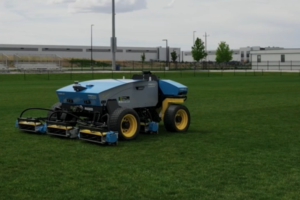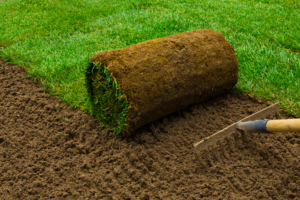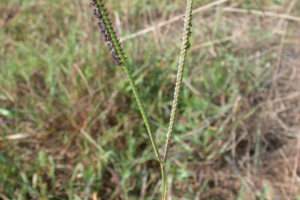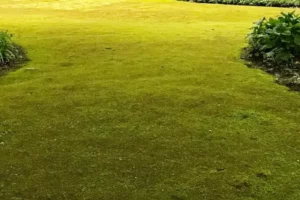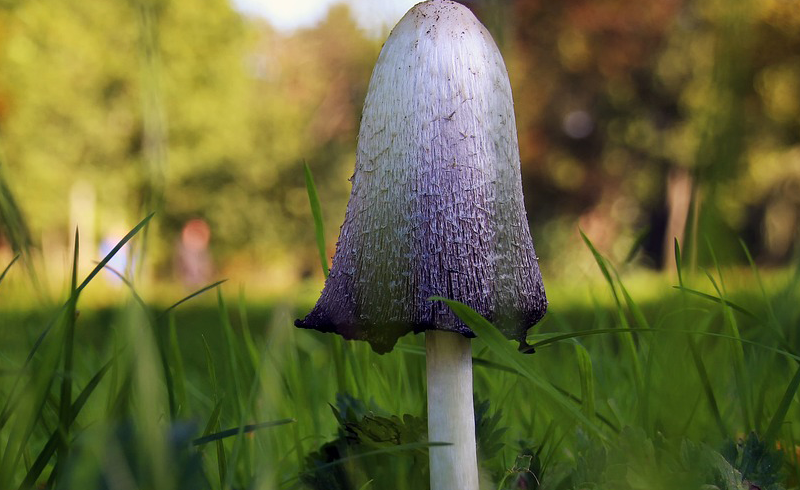
Have you ever noticed mushrooms popping up all over your lawn? It can be an annoying problem for many homeowners. But did you know that dish soap could be the solution? That’s right, using dish soap can help kill and prevent the regrowth of mushrooms in your lawn. This article discuss effectively using dish soap to prevent mushroom growth and keep your lawn looking beautiful.
You’ll want to create a mixture of dish soap and water. Mix a few drops of dish soap with water in a spray bottle or bucket. Then, pour the mixture over and around the mushrooms on your lawn. This will help kill the fungi and prevent them from regrowing.
However, it’s important to aerate the soil before applying the dish soap mixture. This will ensure proper drainage and allow the soap to penetrate the mushroom colonies effectively. If you’re dealing with a more extensive mushroom infestation, you may need to repeat the process several times.
After applying the dish soap mixture, remove any visible remnants of the mushrooms. It’s also a good idea to wear gloves to prevent the spread of spores. Additionally, it’s essential to be cautious about using high concentrations of soap, as it can impact the pH of the soil and affect grass growth. Testing the soap mixture on a small area before applying it to your lawn is always a good idea.
Remember, excessive moisture and compacted soil can contribute to mushroom growth. Regularly aerate your yard to alleviate compaction and remove any decomposed organic matter to prevent this. Following these tips and using dish soap, you can keep those pesky mushrooms at bay and have the lawn of your dreams.
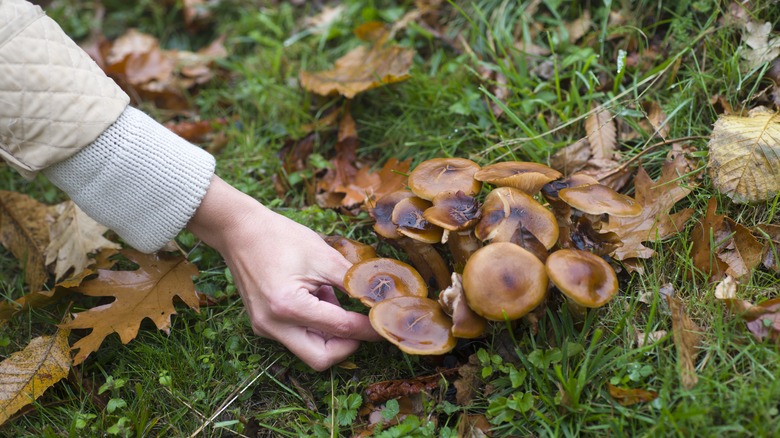
Preventing Mushroom Growth in Lawns with Dish Soap
Mushrooms in lawns can be a common problem for homeowners. These fungal growths can be unsightly and pose a safety hazard if consumed. Fortunately, there are steps you can take to prevent mushroom growth in your lawn using a simple household ingredient – dish soap. In this article, we will discuss the use of dish soap to kill and prevent the regrowth of mushrooms, as well as other vital factors to consider for maintaining a healthy lawn environment.
Understanding Mushroom Growth in Lawns
Mushrooms are the fruiting bodies of fungi that grow in moist and shaded areas, such as lawns. They thrive in environments with ample organic matter, such as dead tree roots, decaying plant material, or excessive thatch. These fungi release spores into the air, which can then settle and germinate in favorable conditions, leading to the growth of new mushrooms. Understanding the factors contributing to mushroom growth can help you implement effective prevention strategies.
Using Dish Soap to Prevent Mushroom Growth
One effective method to prevent mushroom growth in lawns is dish soap. The dish soap acts as a natural fungicide, killing the fungi and preventing the regrowth of mushrooms. It works by altering the surface tension of water, which disrupts the cell membranes of the fungi. To create a dish soap and water mixture, add a few drops of dish soap to a gallon of water and mix thoroughly.
Proper Application of the Mixture
The dish soap and water mixture should be applied directly to the fungi to eliminate and prevent mushroom growth. Pour the mixture over and around the mushrooms, ensuring that the solution reaches the base of the fungi. This ensures the soap can penetrate the cell membranes and effectively kill the fungi. It is essential to reapply the mixture regularly, especially after rainfall, as the soap’s effectiveness can be diluted by water.
Aeration for Proper Drainage
Proper soil aeration is essential for preventing mushroom growth in lawns. Compacted soil can lead to poor drainage, creating an environment where mushrooms thrive. You can improve water penetration and encourage healthy root growth by aerating the soil. This, in turn, reduces the likelihood of mushrooms taking hold in your lawn.
Steps for Aerating the Soil
To aerate the soil, thoroughly water the lawn to soften the ground. Next, using a manual or mechanical aerator, make holes in the soil regularly, focusing on compacted areas. The depth of the holes should be around 2-3 inches, allowing air, water, and nutrients to penetrate the soil. Repeat this process annually or as needed to maintain proper soil aeration.
Preventing Regrowth with Soil Aeration
Regular soil aeration not only improves drainage but also helps prevent the regrowth of mushrooms. By creating a well-drained environment, you can discourage the growth of fungi that thrive in excessive moisture. Remove any decomposed organic matter, such as dead roots or thatch, as these can contribute to mushroom growth.
Repeat Applications for Larger Mushroom Colonies
In the case of larger mushroom colonies, more than a single application of the dish soap and water mixture may be needed to eliminate the problem. Identifying larger mushroom colonies is essential, as they may require multiple applications. These colonies often indicate a higher concentration of fungi and should be taken care of promptly.
How to Properly Repeat the Application
To correctly repeat the application, follow the same steps as before, applying the dish soap and water mixture directly to the mushrooms. Be sure to saturate the fungi and the surrounding area thoroughly. It is essential to be careful in applying the mixture regularly until the mushrooms are eliminated. Remember also to reapply the mixture after rainfall to maintain its effectiveness.
Effectiveness of Multiple Applications
Repeated dish soap and water mixture applications have effectively eliminated larger mushroom colonies. As the soap disrupts the fungi’s cell membranes, multiple applications ensure the mushrooms are entirely eradicated. However, it is essential to know that results may vary depending on the severity of the infestation and the specific type of mushrooms present.
Careful Removal of Mushroom Remnants
When dealing with mushroom growth in lawns, it is crucial to take precautions to prevent the spread of spores. These spores can easily be carried by the wind or physical contact, leading to the growth of new mushrooms in different areas of your lawn. To prevent spore spread, it is essential to remove any visible remnants of the mushrooms carefully.
Preventing Spore Spread Through Removal
To remove mushroom remnants, use a garden rake or shovel to lift them from the ground carefully. Remove as many fungi as possible, including the root system. Place the remnants into a sealable bag to prevent spore dispersal and dispose of them properly. I suggest you clean any tools used in the removal process to avoid spreading spores to other lawn areas.
Wearing Gloves for Protection
When handling mushrooms, gloves are recommended to protect your hands. Some species of mushrooms may contain toxic compounds that can irritate the skin or cause allergic reactions. Wearing gloves can minimize the risk of skin contact with potentially harmful substances.
Proper Disposal of Mushroom Remnants
To properly dispose of mushroom remnants, seal them in a plastic bag and place them in the garbage bin. Avoid composting the remnants, as the spores present can survive and potentially contaminate your compost pile. By ensuring that mushroom remnants are correctly disposed of, you can prevent the growth of new mushrooms on your lawn.
Considerations for Soap Concentrations
When using dish soap to prevent mushroom growth, it is essential to consider the concentration of the soap solution. High concentrations of soap can adversely affect the soil pH and grass growth. Therefore, finding the right balance when creating the dish soap and water mixture is crucial.
Impact of High Concentrations on Soil pH
Soap is alkaline in nature, which means that high concentrations can increase the pH of the soil. This can negatively impact the growth of grass and other plants in your lawn, as they thrive in slightly acidic conditions. To prevent damage to your lawn, using minimal dish soap in the mixture is recommended.
Effects on Grass Growth
High concentrations of soap can also have direct effects on grass growth. While dish soap is generally safe for lawn use, excessive use can cause grass blades to become dry and brittle. It is essential to find the right balance in soap concentrations to maintain the health and appearance of your grass.
Balancing Soap Concentration for Prevention
To find the optimal soap concentration for preventing mushroom growth, it is advisable to start with a lower concentration and gradually increase if necessary. You can begin with a few drops of dish soap per gallon of water and then monitor the results. If the mushrooms persist, you can slightly increase the soap concentration, but be mindful of the potential effects on soil pH and grass growth.
Testing Soap Mixture on a Small Area
Before applying the dish soap and water mixture to your lawn, testing the solution on a small, inconspicuous area is always a good idea. This allows you to observe any potential side effects on your grass or soil. If no adverse reactions occur, you can proceed with the widespread application of the mixture.
Determining Potential Side Effects
When testing the soap mixture, look for any signs of damage to your grass, such as browning or wilting. Additionally, monitor the pH of the soil in the tested area to ensure that it remains within an acceptable range. By closely observing the results, you can make necessary adjustments before applying the mixture to your lawn.
Avoiding Damage to the Entire Lawn
By conducting a small-scale test, you can avoid potential damage to your entire lawn. It allows you to identify adverse reactions and modify the soap concentration or application technique. Taking this cautious approach safeguards the health and appearance of your lawn.
Monitoring Results for Adjustment
After applying the dish soap and water mixture to your lawn, monitor the results over time. Observe any changes in mushroom growth and the overall health of your grass. If the mushrooms persist or new ones begin to appear, it may be necessary to adjust the application frequency or concentration of the soap mixture.
Addressing Excessive Moisture and Compacted Soil
In addition to using dish soap, addressing the underlying causes of mushroom growth is crucial for long-term prevention. Excessive moisture and compacted soil are common culprits, creating an environment where mushrooms thrive. Addressing these issues can significantly reduce the likelihood of future mushroom growth.
Contributing Factors to Mushroom Growth
Excessive moisture in the soil can result from overwatering or poor drainage. It creates the perfect conditions for mushrooms to flourish. Conversely, compact soil hinders water penetration and restricts root growth, providing a favorable environment for mushrooms to take hold. By addressing these contributing factors, you can create a healthier lawn environment.
Aeration as a Solution
Proper soil aeration is an effective solution for reducing excessive moisture and alleviating soil compaction. Creating air channels in the soil allows water to drain more efficiently, reducing the moisture levels that mushrooms thrive in. Additionally, aeration promotes root growth, enhancing your lawn’s overall health.
Removing Decomposed Organic Matter
Another critical step in preventing mushroom growth is removing decomposed organic matter from your lawn. This includes dead tree roots, decaying plant material, or excessive thatch. These organic materials serve as food sources for fungi and can contribute to the growth of mushrooms. Regular dethatching and removal of dead roots can significantly reduce the availability of these food sources.
Conclusion
Preventing mushroom growth in lawns requires a proactive approach. You can maintain a healthy lawn environment by using dish soap to kill and prevent the regrowth of mushrooms, aerating the soil for proper drainage, and addressing underlying issues such as excessive moisture and compacted soil. Remember to carefully remove any visible remnants of the mushrooms and adjust soap concentrations for optimal prevention. You can enjoy a lush and mushroom-free lawn by implementing these strategies and maintaining a proactive mindset.

Bob Green, a passionate lawn care enthusiast with over two decades of landscaping experience, is this website’s proud owner. His vast knowledge of horticulture and dedication to helping homeowners maintain beautiful lawns are reflected in the valuable content he shares on his platform. John has always been interested in Agrostology.









